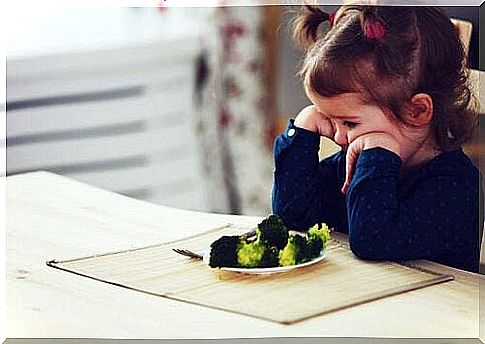What Is Food Neophobia?

Fear or refusal to taste food is known as food neophobia. We are talking about behavior characteristic of the developmental stage of the child. Food neophobia, which literally means “fear of tasting unfamiliar foods”, refers to rejecting new food products.
Sharing a meal with family or friends is usually a very enjoyable activity, and in most cultures it is the basis for many celebrations and other festivities. It’s a great experience… .unless there is someone with food neophobia in the family. In this case, meal times are often strenuous, chaotic and involve constant negotiations.
Eating is often understood to be a very simple process. It would just be a matter of putting the food in our mouth, chewing and swallowing. But this is not the reality. Eating is an incredibly complex process that can be a real challenge for many people, requiring the cooperation and coordination of many bodily systems.
Why does food neophobia occur?
This reluctance to try new foods is characteristic of all omnivorous animals, among which we can find ourselves. This is an innate safety response to the potential dangers of an environment in which many foods can be toxic. Thus, in contact with new foods, the attitude is one of prudence, avoiding them as much as possible while promoting the consumption of foods that we already know. Therefore, it is only after being tasted a number of times that they are accepted as safe foods.

Another hypothesis has more to do with learning flavors. People have receptors for four basic flavors: salty, bitter, sour, and sweet. Sweet and savory flavors are naturally preferred by people from birth. The tendency to sweets, present in newborns, is generally higher in children than in adults.
The learning of flavors begins even before the baby is born. Thus, some flavors consumed during pregnancy are preferred soon after birth over others. Just like pregnancy, breastfeeding is a good time to learn. As can be seen, some flavors pass through breast milk. Therefore, exposure to flavors at this stage of life can be the first lesson in taste.
What are the characteristics of food neophobia?
Food neophobia mainly occurs at two critical age periods: during weaning (4-8 months) and during the autonomy period (15-36 months). In the first case, the mother-child bond encourages neophobia, because the child feels protected by his parents. Therefore, the most painful period appears around 15 months, when the child begins to walk.
One of the characteristics of food neophobia is that it is accompanied by negative prejudices about palatability, that is, it is assumed that new foods will have an unpleasant taste. It is therefore important to create positive experiences associated with trying new products. In these cases, the imitation behavior works well. For example, if the child observes that the parents eat these foods to their liking, the children are more likely to agree to try them.
The reluctance towards new products is stronger for food:
- Of animal origin as opposed to those of non-animal origin
- Raw vs. cooked
- Has a sour or bitter flavor as opposed to a sweet flavor
What is the best way to deal with a child with food neophobia?
Studies show that parental attitudes towards children’s behavior have a significant impact on the development of children’s food preferences. So, to stimulate the development of a beneficial diet, it is important to keep in mind that parents have a preconceived idea of what foods they offer their children. For example, a restrictive attitude towards tasty foods leads them to increase their preference, while a taxing attitude towards certain foods often has the opposite effect.

Pleasant situations in which the child shares the experience with the parents tend to give a positive meaning to the foods eaten in this situation, and vice versa. This is proof of the importance of the reaction of parents to the eating behavior of their children for the development of healthy food preferences.
Despite everything we have just said, the phobia usually subsides when the child is around five or six years old. That way, knowing that your children, faced with a new taste, need patience to overcome neophobia can help them develop healthy habits.










